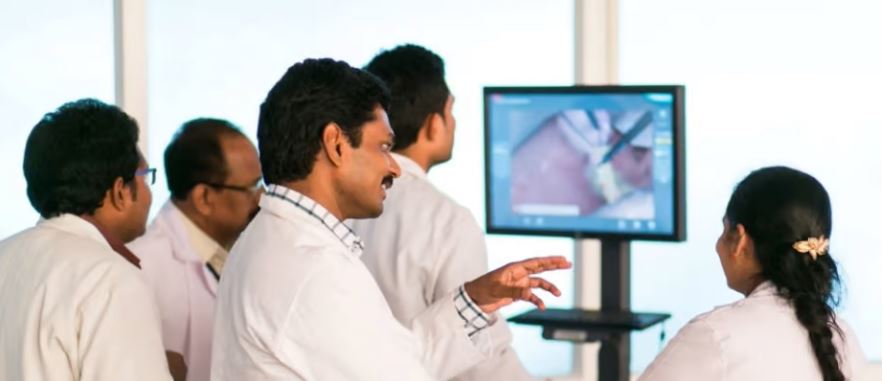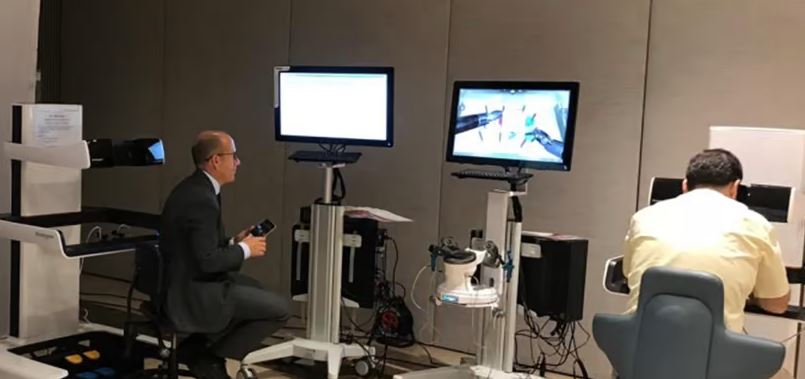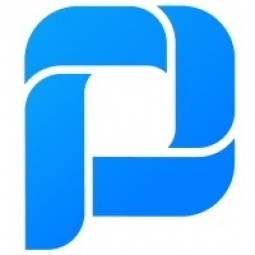Customer Company Size
Mid-size Company
Region
- America
Country
- United States
Product
- ProcessMaker Campus
Tech Stack
- Cloud-based Workflow
- BPM software suite
Implementation Scale
- Enterprise-wide Deployment
Impact Metrics
- Productivity Improvements
- Cost Savings
Technology Category
- Platform as a Service (PaaS) - Application Development Platforms
Applicable Industries
- Education
Applicable Functions
- Procurement
- Human Resources
Use Cases
- Process Control & Optimization
- Inventory Management
Services
- Cloud Planning, Design & Implementation Services
- System Integration
About The Customer
Oregon City Schools is a K-12 Public School District located in the city of Oregon in Ohio. It currently has approximately 3,900+ students and is a combination of two communities: the City of Oregon and Jerusalem Township. The school district is the 2nd largest employer in the district with around 450 employees and the major gathering place for the community. It is formed by 3 Elementary Schools, 1 Middle School (5-6), 1 Junior High School (7-8) and 1 High School. The Oregon City Schools is a Comprehensive school district since it provides career technology.
The Challenge
Before the implementation of ProcessMaker Campus, Oregon City Schools District managed its Purchase Requisition Requests through paper-based forms. Staff members would fill a form and submit it to the building, a Courier would then pick it up (once a day) and the forms would then be distributed to the correct department at the Central office. The process could take up to three days depending on supervisor approvals. Once it hit accounting, Purchase Requests were inputted daily into the system by hand and then had to be “shipped” back to the school or origin. When individuals were out of the district it could be even longer. Some of the biggest challenges the School District experienced were the timeliness of getting purchase orders back to requestors, POs sitting on individuals desks and not moving forward, paper shuffle with paper going mailbox to mailbox, and nobody knew when a PO might get entered into the system because it could sit on someone’s desk for several days while they were out of the office.
The Solution
The Oregon City Schools District chose ProcessMaker Campus as a solution provider due to the easy implementation process among other reasons. Their technical team did not need to be involved since the solution includes setup assistance, standard predesigned forms, and hosting. During an initial phase the Requisition Request process was implemented to provide the ability to generate purchase requisitions, track the request approvals, and manage the submission of the requests directly to the official Ohio State software that does the actual generation of the PO. ProcessMaker Campus provides a very reliable solution hosted in the Cloud. The friendly interface and forms have been designed to facilitate School’s day to day work. The system also includes specialized support staff and a simple ticketing system, standard reports, various setup options and a growing integration with the Ohio State Software which provides a seamless integration to external resources including SIS, the State Software, DMS, and others.
Operational Impact
Quantitative Benefit

Case Study missing?
Start adding your own!
Register with your work email and create a new case study profile for your business.
Related Case Studies.

Case Study
Revolutionizing Medical Training in India: GSL Smart Lab and the LAP Mentor
The GSL SMART Lab, a collective effort of the GSL College of Medicine and the GSL College of Nursing and Health Science, was facing a challenge in providing superior training to healthcare professionals. As clinical medicine was becoming more focused on patient safety and quality of care, the need for medical simulation to bridge the educational gap between the classroom and the clinical environment was becoming increasingly apparent. Dr. Sandeep Ganni, the director of the GSL SMART Lab, envisioned a world-class surgical and medical training center where physicians and healthcare professionals could learn skills through simulation training. He was looking for different simulators for different specialties to provide both basic and advanced simulation training. For laparoscopic surgery, he was interested in a high fidelity simulator that could provide basic surgical and suturing skills training for international accreditation as well as specific hands-on training in complex laparoscopic procedures for practicing physicians in India.

Case Study
IoT platform Enables Safety Solutions for U.S. School Districts
Designed to alert drivers when schoolchildren are present, especially in low-visibility conditions, school-zone flasher signals are typically updated manually at each school. The switching is based on the school calendar and manually changed when an unexpected early dismissal occurs, as in the case of a weather-event altering the normal schedule. The process to reprogram the flashers requires a significant effort by school district personnel to implement due to the large number of warning flashers installed across an entire school district.

Case Study
Implementing Robotic Surgery Training Simulator for Enhanced Surgical Proficiency
Fundacio Puigvert, a leading European medical center specializing in Urology, Nephrology, and Andrology, faced a significant challenge in training its surgical residents. The institution recognized the need for a more standardized and comprehensive training curriculum, particularly in the area of robotic surgery. The challenge was underscored by two independent studies showing that less than 5% of residents in Italian and German residency programs could perform major or complex procedures by the end of their residency. The institution sought to establish a virtual reality simulation lab that would include endourological, laparoscopic, and robotic platforms. However, they needed a simulator that could replicate both the hardware and software of the robotic Da Vinci console used in the operating room, without being connected to the actual physical console. They also required a system that could provide both basic and advanced simulation training, and a metrics system to assess the proficiency of the trainees before they performed surgical procedures in the operating theater.

Case Study
Edinburgh Napier University streamlines long-distance learning with Cisco WebEX
• Geographically dispersed campus made in-person meetings costly and inconvenient.• Distance-learning programs in Malaysia, India, and China required dependable, user-friendly online tools to maximize interaction in collaborative workspaces.• Virtual learning environment required a separate sign-in process, resulting in a significant administrative burden for IT staff and limited adoption of collaboration technology.

Case Study
8x increased productivity with VKS
Before VKS, a teacher would spend a lot of time showing a group of 22 students how to build a set of stairs within a semester of 120 hours. Along with not leaving the teacher much time to provide one-on-one support for each student to properly learn carpentry, it also left a considerable amount of room for error. Key information would be misinterpreted or lost as the class was taught in the typical show-and-tell way.

Case Study
Scalable IoT Empowering GreenFlex's Sustainable Growth
GreenFlex, a company that supports sustainable development, decarbonization, and energy efficiency, faced several challenges in its quest to expand its business. The company needed to deploy a robust and sustainable IoT technology to support its growth. It was crucial for them to monitor and control devices at customer sites in a safe and reliable manner. They also needed to integrate devices across a range of communication protocols and gather and act on data to meet efficiency targets. GreenFlex had previously built IoT capabilities into its digital platform, GreenFlexIQ, to monitor and manage customer sites remotely. However, they soon realized that they needed a new platform to support their ambitions. They needed a platform that could scale to connect more devices for production management and make it easier for the operations team to manage devices in the field.







